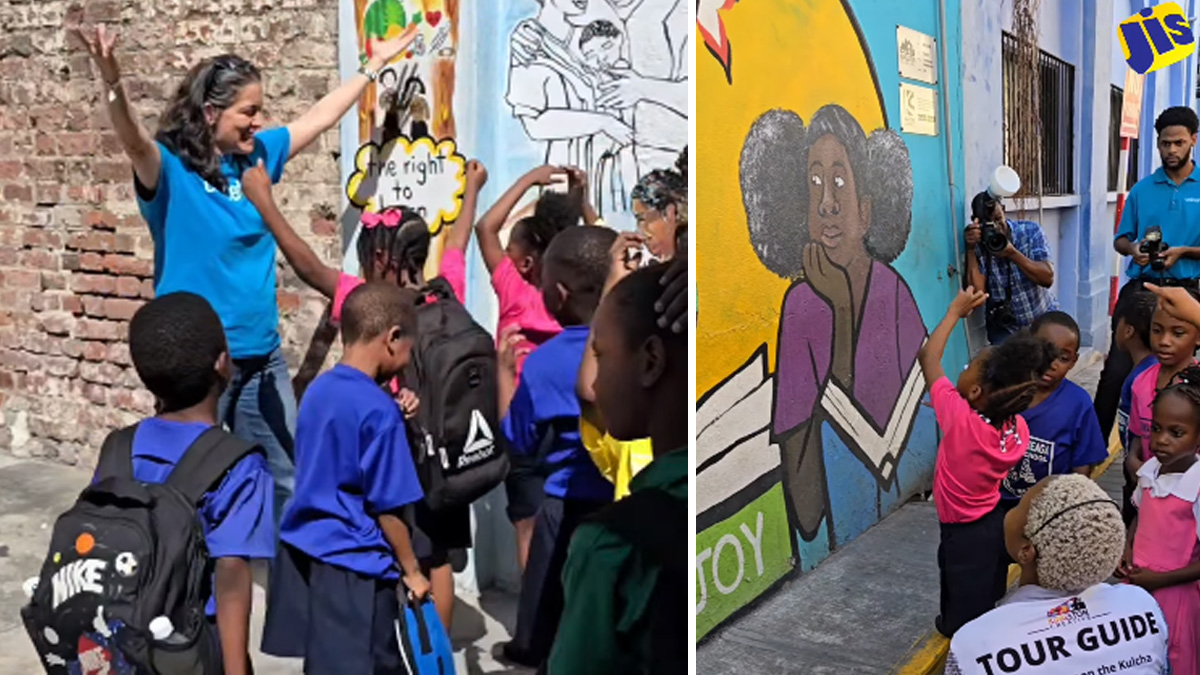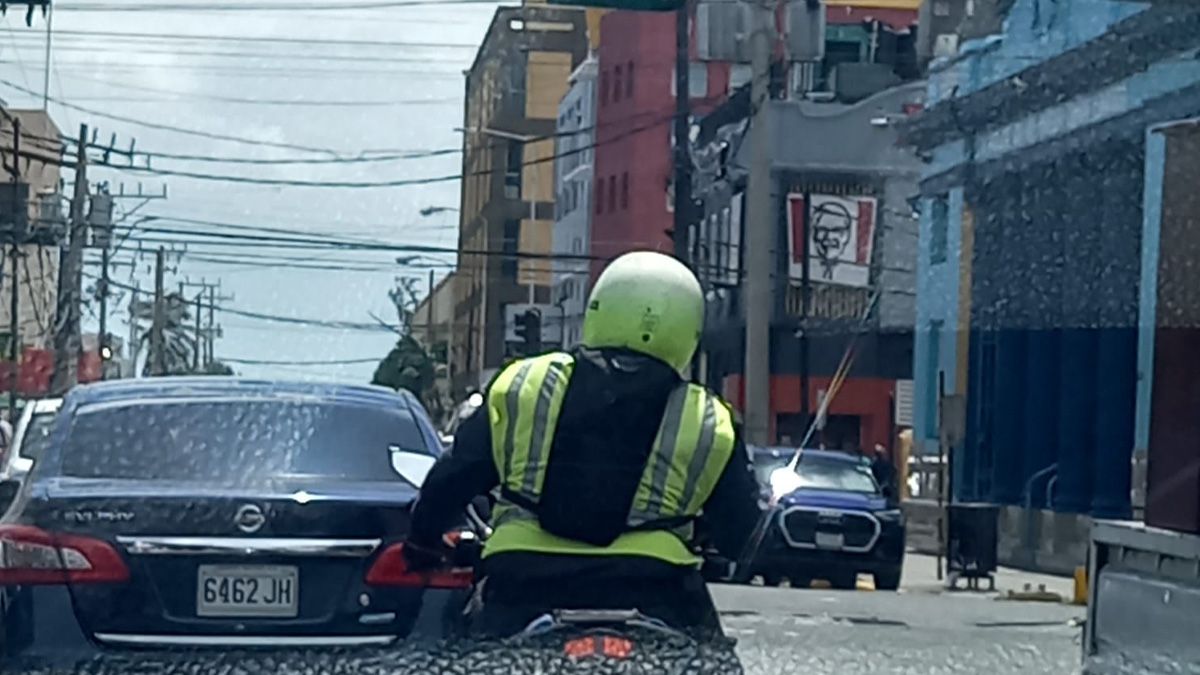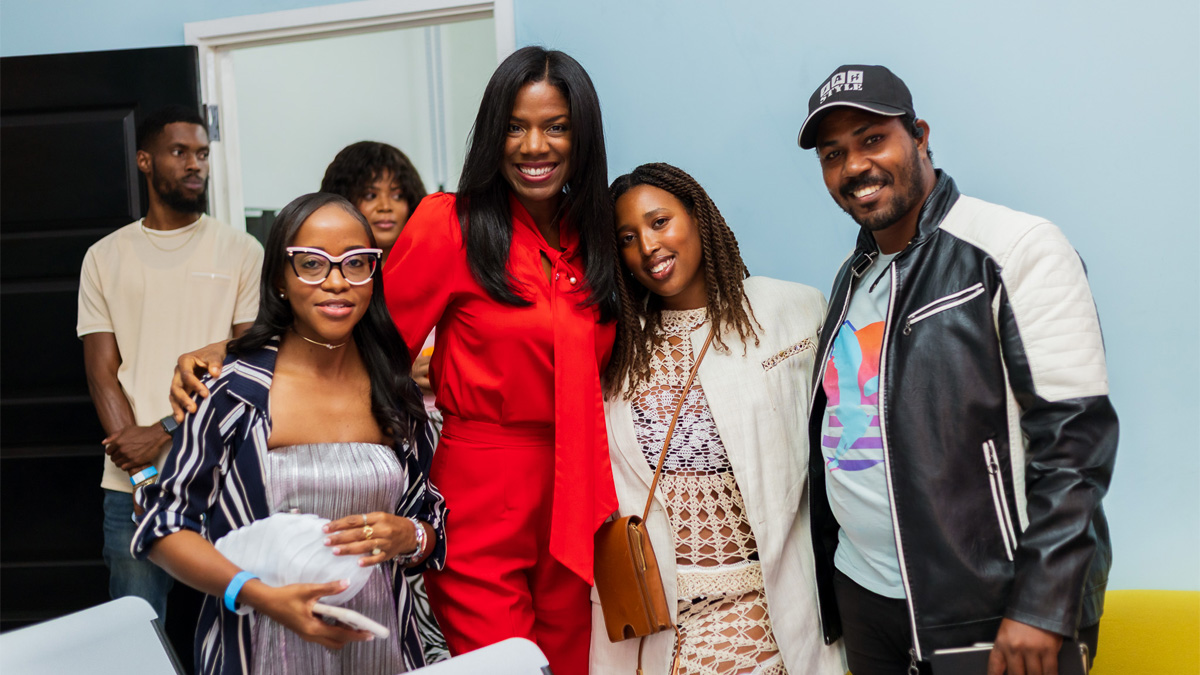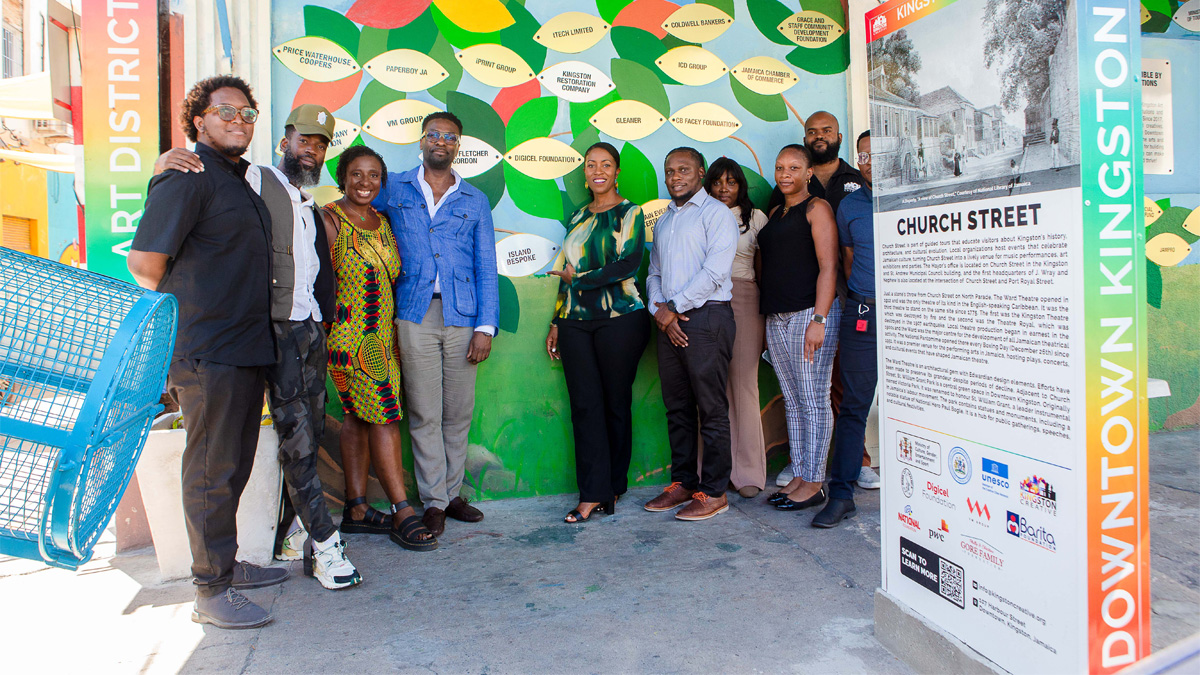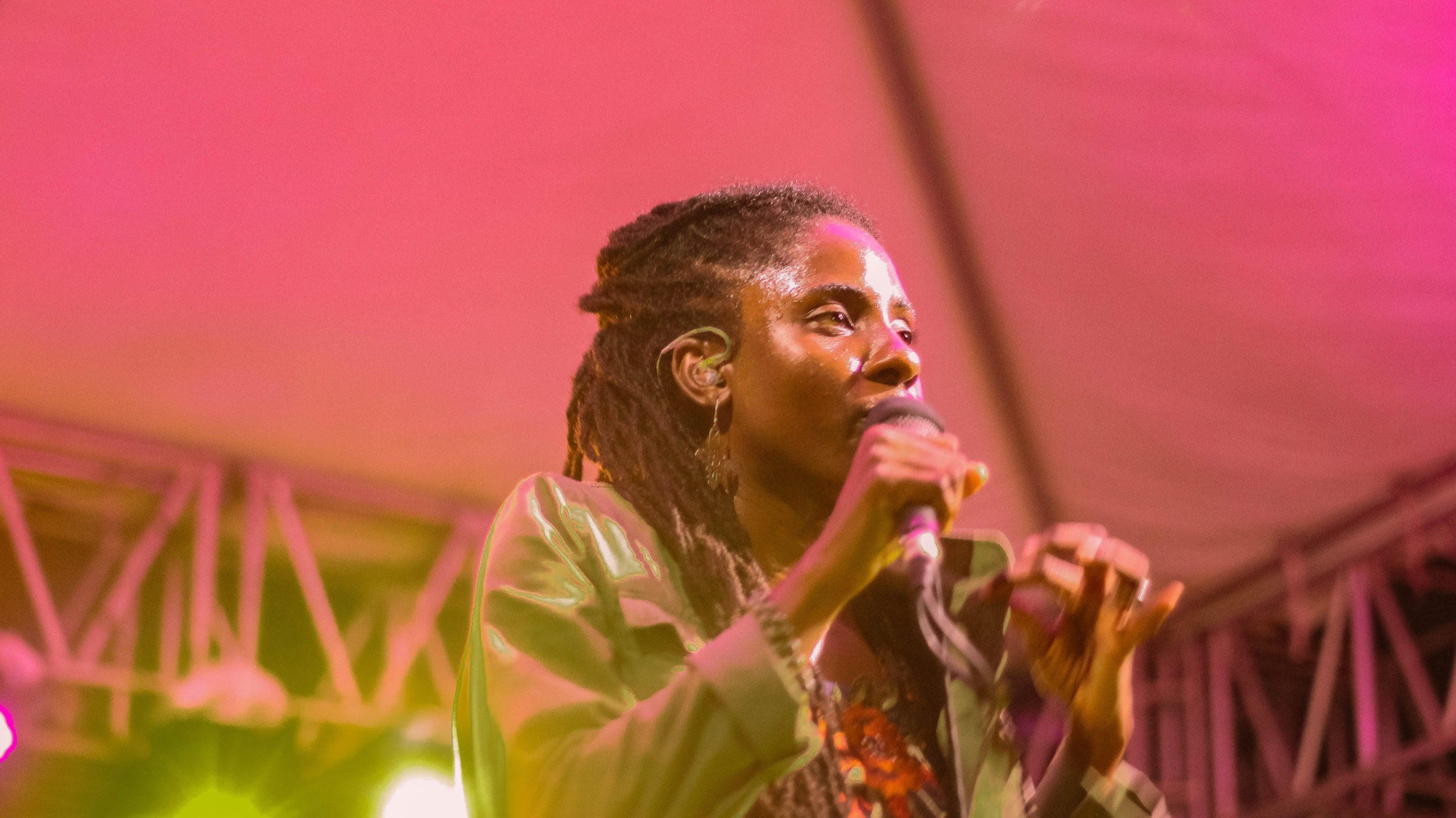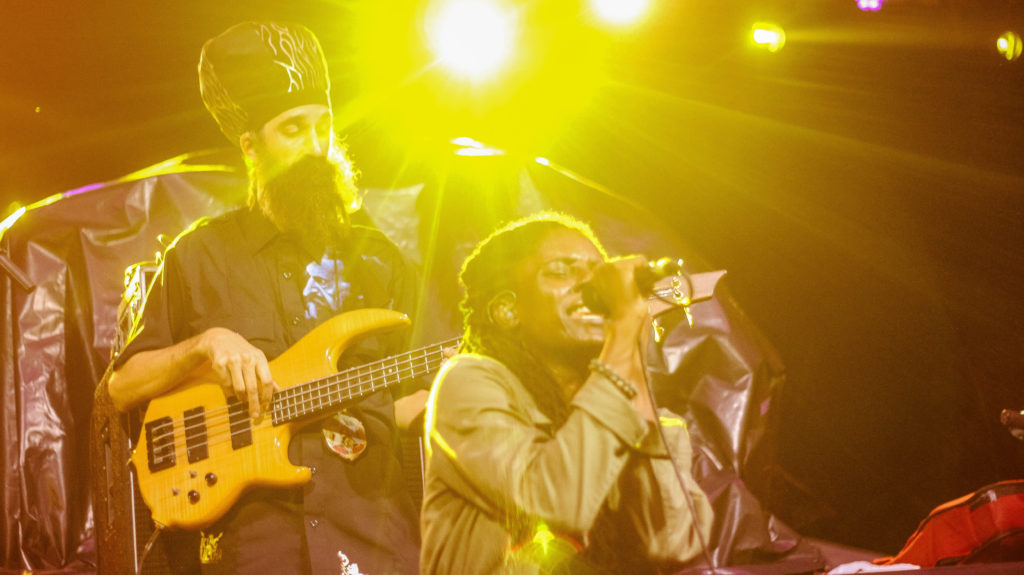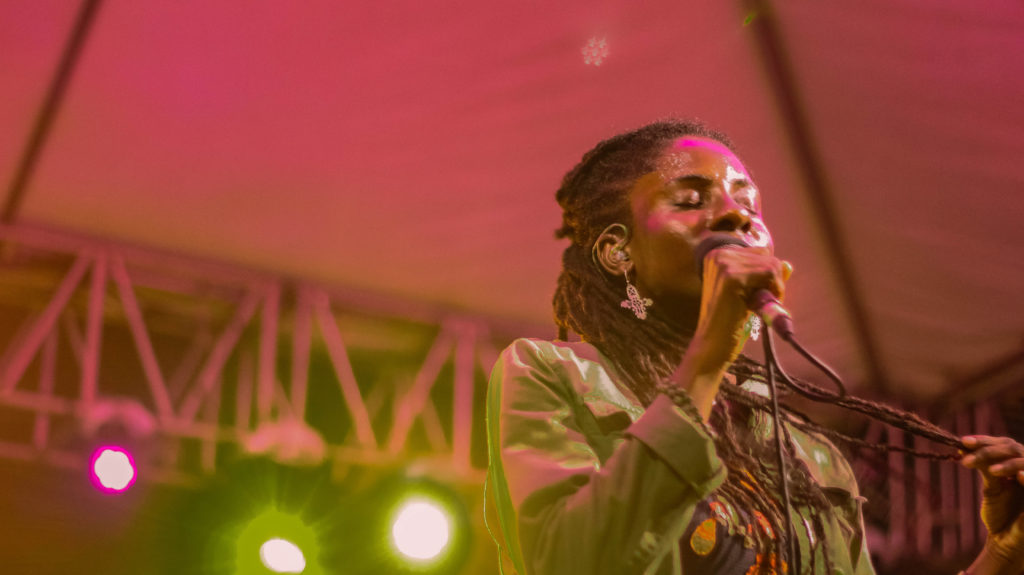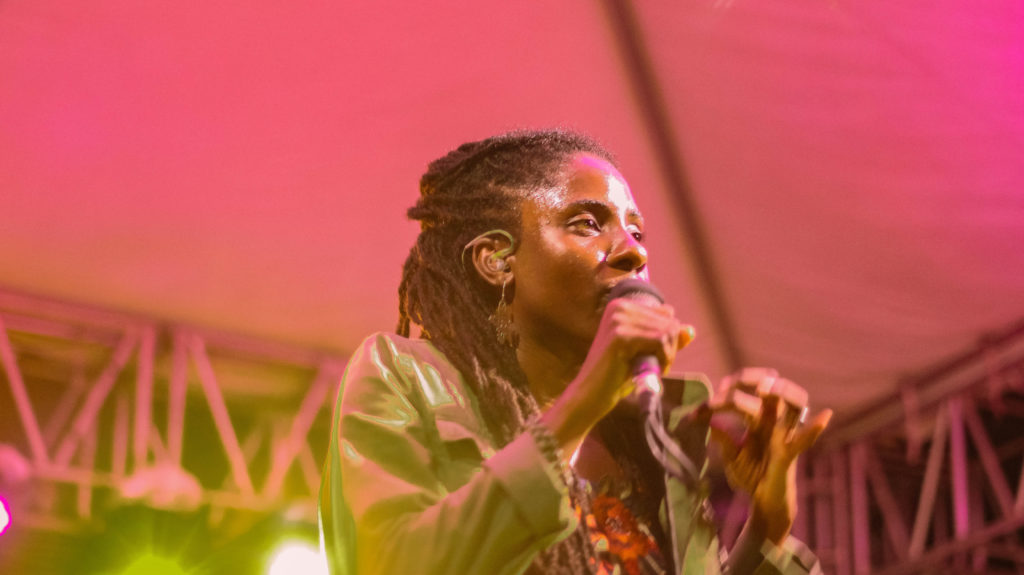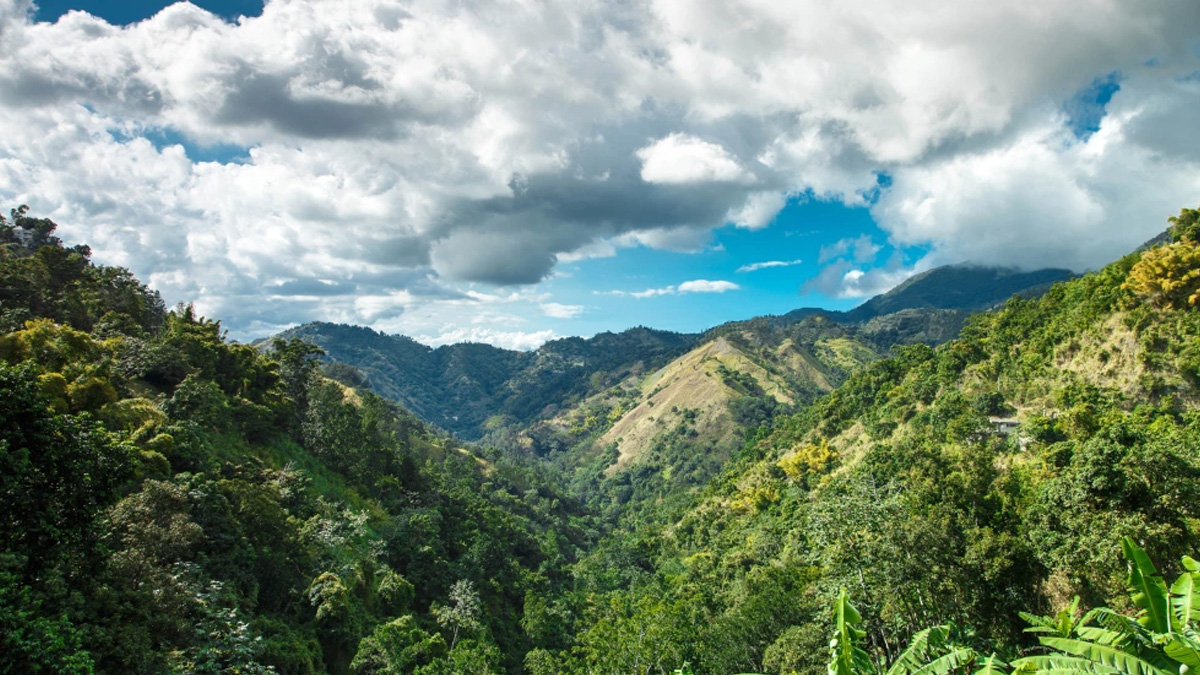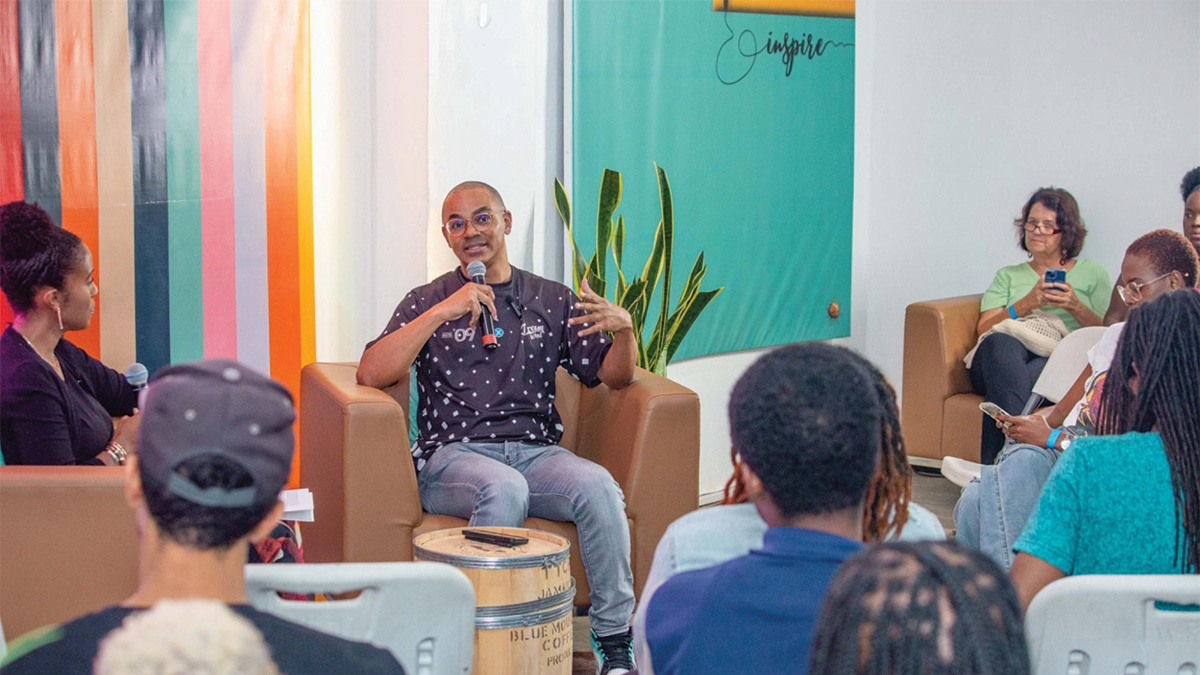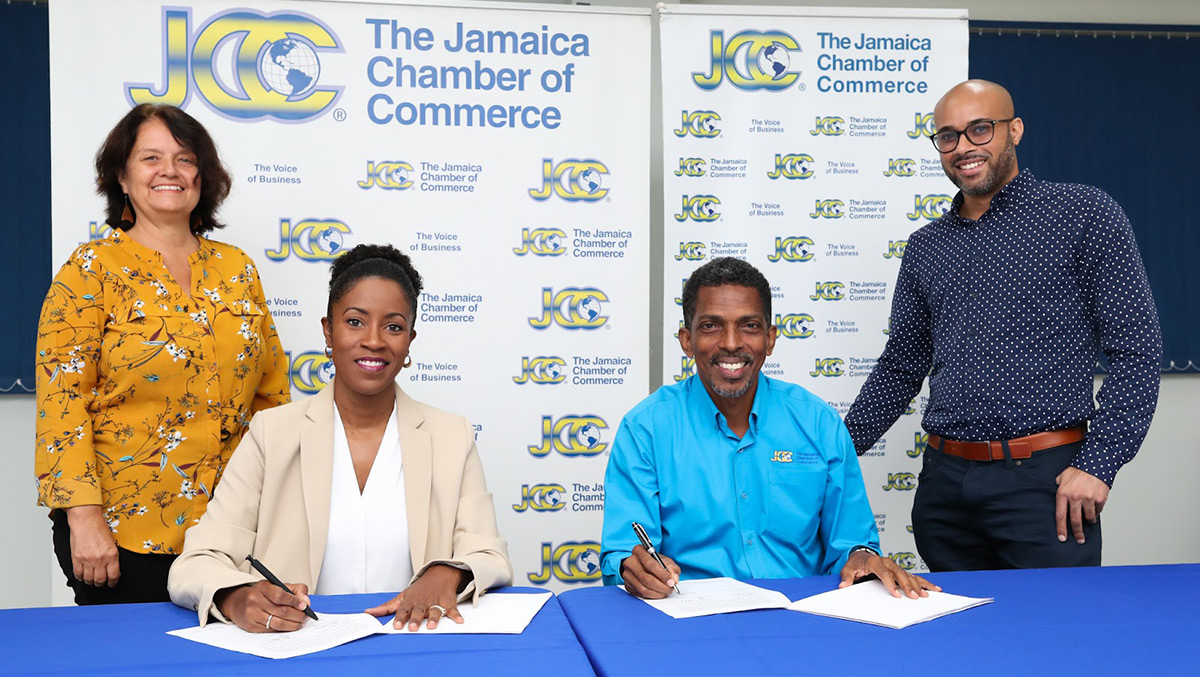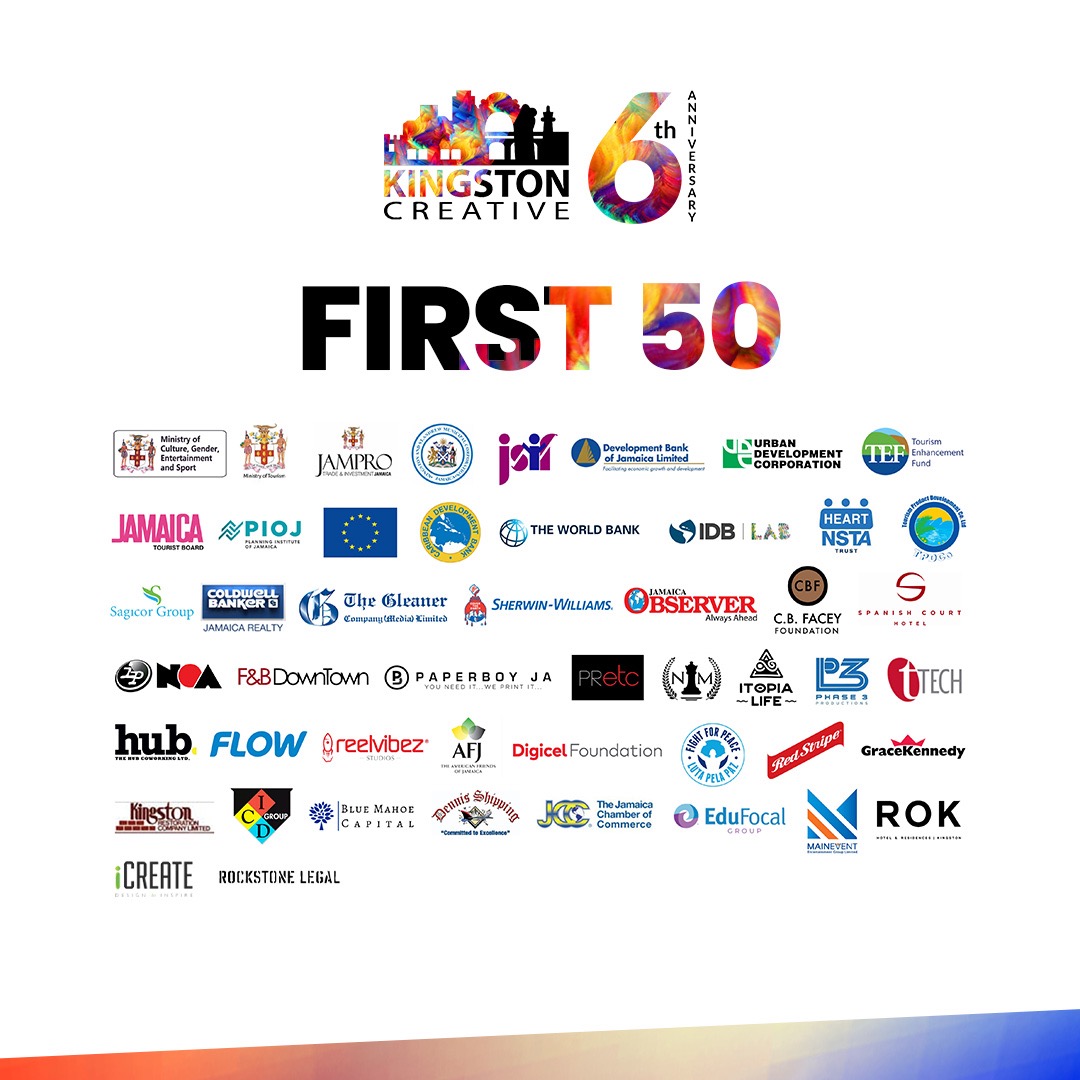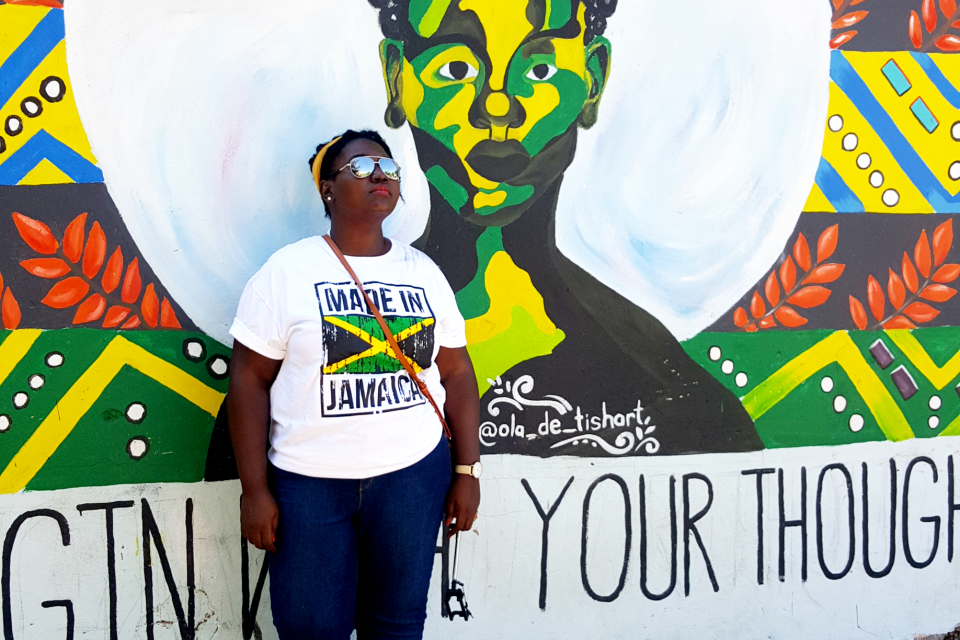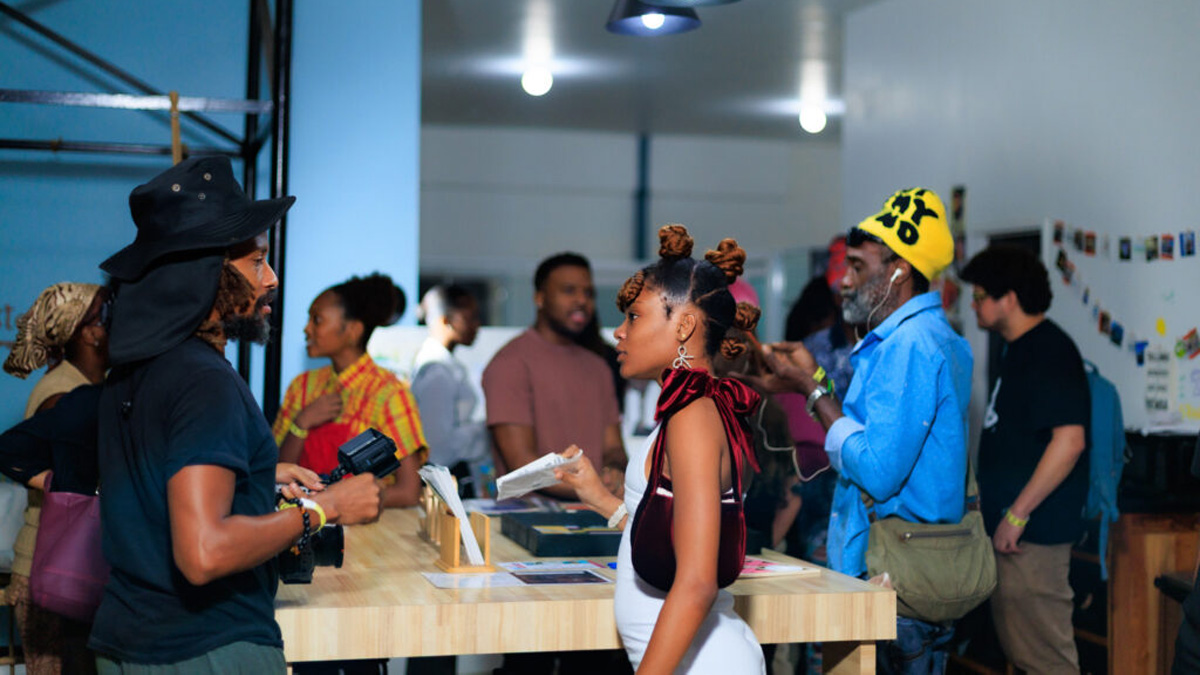Category: Blog_Post
All blog posts
Global Play Day
Minister of Education, Skills, Youth and Information, Hon. Dana Morris-Dixon, in partnership with UNICEF and Kingston Creative, join students at Water Lane, Downtown Kingston, to celebrate Global School Play Day earlier today (Feb. 5). She highlighted the vital role of play in child development, emphasising its impact on resilience, teamwork, and essential life skills.
Good News from Downtown
I have been getting some excellent feedback about the police officers these days. If they behave unprofessionally, we should say that, but when they do well, we should also say it. Encouragement does sweeten labour. The following was sent to me by a well-known musician, Rosina Christina Moder, the wife of another well-known musician, Peter Ashbourne.
Identity and Authenticity in Jamaican Fashion
Kingston Creative Celebrates the Legacy and Future of Jamaican Fashion at Monthly Meetup
Kingston Creative hosted its latest Creative Meetup in Downtown Kingston, bringing together designers, stylists, fashion entrepreneurs, and cultural enthusiasts to celebrate the vibrant and ever-evolving world of Jamaican fashion.
Held in the Kingston Creative Space, a chic multi-purpose coworking space above Swiss Stores in downtown Kingston — once the bustling heart of Jamaica’s fashion retail scene — the evening served as both a tribute to the rich history of Jamaican style and a deep dive into the exciting future of the island’s fashion industry.
The event kicked off with a warm welcome to speakers, guests, and members of the fashion community. Attendees were invited to reflect on the island’s long-standing fashion identity – one rooted in Taino, African, and Colonial styles, shaped by socio-political movements and cultural expression, and defined by bold, creative evolution. From the iconic red green and gold of Rastafarian fashion to the global impact of Jamaican dancehall culture, the country’s style has always been unapologetically expressive.
Kingston Creative Cofounder Andrea Chung stated that Downtown Kingston, once home to legendary stores such as Joseph’s and Ammar’s, set the perfect stage for this conversation on fashion. “This evening honours trailblazers like Ruth Hussey, Jessica Ogden, Jose Buchanan, Heather Layne, Sadie Soas, and Sandra Kennedy — pioneers who paved the way for today’s young fashion innovators.”
The highlight of the evening was a thought-provoking panel discussion featuring fashion industry leaders Keneea Linton-George and Mecca James-Williams. “I’ve been in the industry for almost 20 years, part of the whole Fashion Week era. The current state of Jamaican fashion is that we are bursting at the seams with talent”, said Keneea. “What we don’t have is infrastructure, so the manufacturing capability needed to scale small businesses and build international brands is just not there. The global opportunity right now is for designers to “bloom where they are planted”. So we need to invest in training and technical skills so that we can manufacture more in Jamaica.”
The current fashion scene boasts designers like Rachel Scott (Diotima), Francesca Lake, Samantha Black (Sammy B), and jewelry icons Matthew Harris (Mateo) and Chari Cuthbert, whose “Vote” necklace famously adorned Michelle Obama. Style legends like Biggie, Carlton Brown, and Grace Wales Bonner continue to push boundaries, while modeling moguls Kingsley Cooper of Pulse and Deiwght Peters of SAINT International have brought Jamaican beauty and talent to international runways. The work of stylists such as Dexter Pottinger, Neko “Bootleg Rocstar” Kelly, and Ayana Riviere was also recognized for shaping the aesthetic of future generations.
“The successful designers today are speaking from a lens of authenticity, telling stories of their background, where they come from and how they see the world” commented Mecca James, owner of the Sweet Like Jam ecommerce platform. ”Its not about pinpointing the one single identity or definition of Jamaican culture, the Jamaican story is very layered and so is our ‘fashion identity’”
The evening also acknowledged the Freezone manufacturing era, which provided livelihoods to thousands and helped build an industry. The issue of sustainability was raised, and the need to shift from single-wear polyester “throwaway” garments that last forever in a landfill, to classic wardrobe pieces made of biodegradable fabrics. “I’m wearing Diotima,” commented Mecca, who was wearing a cream crocheted dress. “I’ve worn this dress four times and each time it’s styled differently”. On the theme of sustainable fabrics, it was noted that Jamaica produces Sea Island cotton – a rare and luxurious type of cotton, one of the finest and highest-quality cottons in the world, often used in high-end fashion and luxury textiles.
One pressing question from an audience member was whether Mission Catwalk would be returning this year. “Well, I can say that it is in pre-production and it is returning,” stated Keneea. “It’s a part of the fashion landscape and we have so much talent in Jamaica – the designers are hot on my heels!”
As the creative community continues to gather monthly, Kingston Creative remains committed to fostering innovation, entrepreneurship, and a healthy creative economy — one conversation at a time.
Island Bespoke as 70th First 100 Partner
Kingston Creative Unveils Donor Plaque Recognizing Island Bespoke as 70th First 100 Partner
Kingston Creative today celebrated the unveiling of a new donor plaque on Water Lane, formally recognizing Island Bespoke as the 70th First 100 Partner. The ceremony marked a significant contribution to the organization’s mission of fostering a vibrant creative ecosystem and revitalizing Downtown Kingston.
David Newell, Founder of Island Bespoke, a visionary entrepreneur with deep roots in Jamaican heritage and extensive tailoring experience including a decade at Savile Row’s Gieves & Hawkes, spoke passionately about his commitment to supporting local creativity. “My heritage is rooted in Jamaica, and I believe in the power of art and design to transform communities. Therefore supporting Kingston Creative’s mission to revitalise Downtown Jamaica into a thriving creative hub aligns with my personal commitment to preserving and promoting the culture that shaped me,” said Newell. “Too often, Jamaican talent is nurtured here but exploited elsewhere. I want to see the next generation of artists and designers thrive in a space that truly belongs to them, where their innovation drives opportunity and progress right here at home.”
The event brought together representatives from Kingston Creative, Island Bespoke, Tribe 9 Studios and members of the media to commemorate the partnership. The plaque proudly acknowledges Island Bespoke’s generous support, joining a distinguished group of individuals and organizations committed to empowering artists and driving cultural and economic growth in Jamaica. Kingston Creative has set an ambitious target of reaching 100 donors in 2025.
“David Newell and I met at the Jamaica Diaspora Conference hosted by the Ministry of Foreign Affairs and Foreign Trade one year ago. He expressed his interest in investing in Jamaica and the local creative economy and he has followed through in an inspirational way, recently opening a business right here at 107 Harbour Street,” said Dempster Chung. “We are so grateful for their philanthropy and encourage more members of the Diaspora to get involved in the positive change happening at home. Our First 100 Partners help to provide resources, create opportunities, and build a thriving community for Kingston’s creatives.”
The First 100 Partners initiative is a crucial fundraising effort for Kingston Creative, providing vital resources for its various programmes, including public art installations, capacity-building workshops, and the maintenance of creative spaces like the Kingston Creative Coworking Space and the Artwalk.
Island in Transition
The Journey from Reggae Music Mecca to Creative Economy Hub.
Jamaica has long been a cultural mecca, with over 4 million visitors per year coming to its shores to soak up the sun and experience the culture. This is the birthplace of Bob Marley, reggae music, and no less than five other major music genres, including dancehall, ska, rocksteady, dub, and mento. The creative talent isn’t just limited to music as Jamaica also has a creditable showing in dance, literature, film, visual arts, the culinary arts, and craft.
Poverty and crime, seen at its worst in the inner cities of Kingston, appears quite at odds with Jamaica’s cultural reputation. A common misconception is that Jamaica is doing well, having earned significant income from its reggae music industry. The reality, however, is that most of the economic activity (recording, publishing, distribution) that drives the Jamaican music industry is domiciled offshore.
Wikipedia’s list of international reggae festivals lists 136 events – all located outside of Jamaica. Jamaica does have two major reggae festivals, Sumfest and Rebel Salute, and by comparison, Italy has 16. While a few individual Jamaican artists may do well from touring overseas, most local creatives struggle to make a living. Over the years, the lion’s share of the earnings from Jamaica’s culture, accumulated in other countries, leaving Jamaica underdeveloped.
Globaleconomy.com reveals that Jamaica’s ranks second in the world for ‘human flight and brain drain’, out of 177 countries, achieving a rating of 9.5 out of 10 in 2023. As both the business and the audience are overseas, it is no surprise that artists of all types frequently migrate, contributing to the crippling brain drain experienced by the island and depleting the cultural sector of talent.
But all is not lost. Jamaica can still turn around its fortunes and it is betting on its cultural capital to take it there. Attention is being paid to developing creative entrepreneurs and aligning the policies needed to spur Creative Economy growth. Investments are being made to provide the funding and infrastructure that artists and creatives need to monetize their talent. The informality of the sector is also being challenged, as new programmes actively encourage creative entrepreneurs to register their businesses and their intellectual property, at no cost.
The recent developments augur well for the future of the cultural and creative industries; from a billion-dollar Film Fund to free creative training, creative coworking spaces, and a new Art District being developed in Downtown Kingston. The vibrant murals in Water Lane created by a young cadre of artists and animated by augmented reality, are spurring the rapid growth of cultural tourism in once desolate back streets.
Behind the scenes, this change is being driven from the bottom up, with a complex raft of multilateral, public, private and third sector partnerships as well as Jamaica’s extensive Diaspora lending support. It appears that the potential of the creative economy to deliver much needed growth is now being understood by the creatives themselves, as well as the policymakers. Concrete steps are being taken to ensure that the local ecosystem is improved, so that with the next wave of art and music emanating from Jamaica, the creators, artists and local communities hopefully will be the ones that benefit.
As a small island nation of only 2.8 million people, Jamaica’s musical and sporting icons have no business being global household names. The true power of Jamaican culture goes way beyond the entertainment value or even the possibility of culture delivering economic growth. Jamaica’s culture speaks to its people, its heritage, a turbulent history, a sense of fierce independence and social consciousness – powerful messages of “one love” that the world has embraced, and which Jamaica must do everything possible to preserve.
Author: Andrea Dempster Chung, March 2024
Photo Credits: Verrol Blake
Jah9 on finding fulfillment amid the fiasco – Gladstone Taylor
Correspondence from the Continent: Jah9 on finding fulfillment amid the fiasco
Music is never disembodied from Jamaican culture and lifestyle. Since the onset of what we know as Jamaican life, it has been used for things like education, passing coded messages, commentary, and sometimes informal reporting. After the country’s independence in 1962, when political structures were being erected, Jamaican music began to breathe it’s first breath. While political structures were naturally aligned to policies, philosophies, sometimes even religion, music as an art form, likely due to its extremely democratic nature, has always been about people politics. The great advantage of music, not that it can be properly compared to politics, is its fluidity. It became a way for the now independent citizens of Jamaica to say what they wanted, how they wanted it said(usually in their own language and without censorship), through the many elected minstrels that rose to calling. As with all industries, there are business facets that support the art form, allowing it to thrive. However, no matter how lucrative the industry becomes, most of the power in music still rests with the people. As much as people rely on music and art, musicians or creators rely on people a lot more.
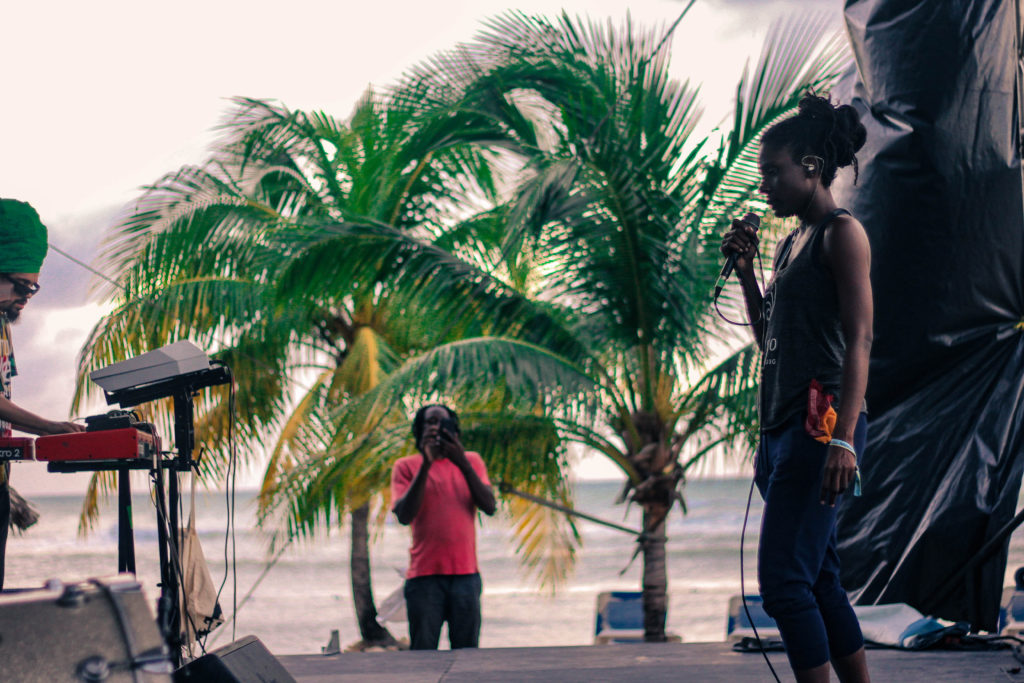
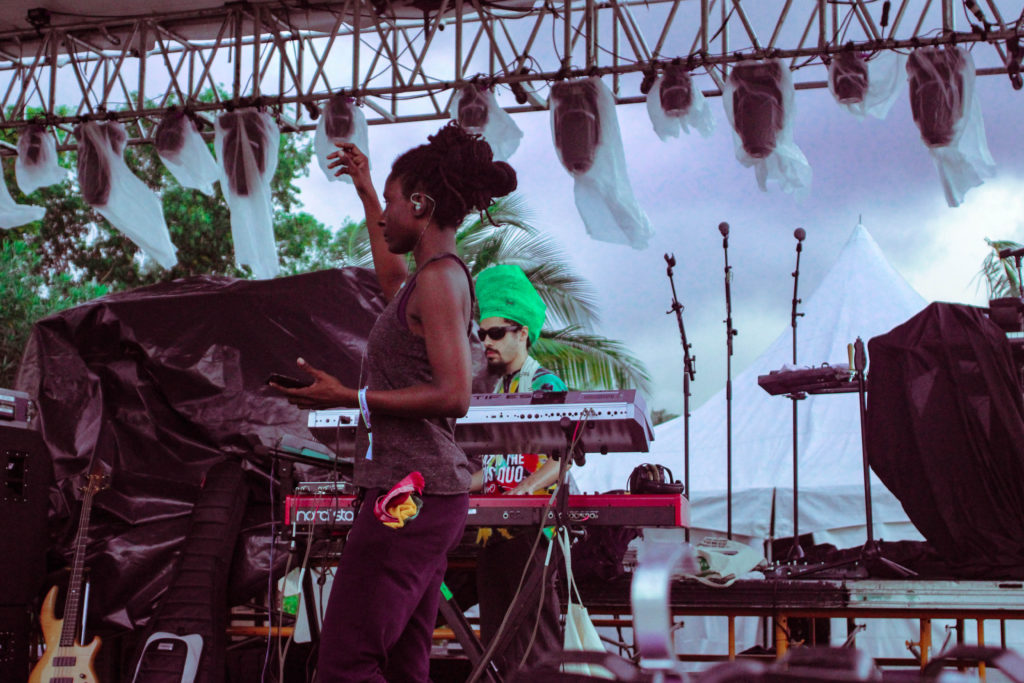
Jamaica – 36 Hours of Culture
There’s something about Jamaica that made me feel like I was home, like the island reached out with open arms and said, “Come here, chile, you’re one of us.”
From the moment my feet touched Jamaican soil, I had a little theme song playing in my head: Jamaica, Jamaicaaaa. Why? Because in just 36 hours, this island’s spirit had infiltrated my system. My blood? Now, 30% jerk seasoning, 20% curry and a cheeky splash of rum cream for balance.
Jamaica as a Festival Island: The Economic Power of Cultural Events
Jamaica’s reputation as a cultural powerhouse is undeniable, but are we fully leveraging it to drive economic growth? The Freedom Street New Year’s Eve concert made headlines, attracting 32,000 visitors and generating an estimated $30 million in revenue. It was a clear demonstration of the economic potential of large-scale entertainment events.
Globally, festivals are major economic drivers. Burning Man generates $66M USD and attracts 70,000 visitors to the Nevada desert. The Edinburgh Festival in Scotland brings in 4 million attendees, generating $504M USD. Rio Carnivalin Brazil welcomes 5 million visitors annually, contributing $760M USD to the economy. Even tiny Ibiza, with a population of 154,000, hosts over 500 events per season, making 84% of its GDP from tourism.
With our rich culture and global brand recognition, Jamaica has everything it takes to establish itself as a true Festival Island. But what will it take to get there?
At our latest Kingston Creative Meetup, we explored this topic with Scott Dunn, Group Managing Director of Dream Entertainment Ltd., the team behind Dream Weekend and Xodus Carnival. In a fireside chat with Andrea Dempster Chung, he shared insights on festival growth, industry challenges, and what’s needed to scale Jamaica’s festival economy.

Q/ How did you decide to start up the Dream Entertainment Group and what one moment has been the highlight of your career journey?
I have a lot of partners in Dream. It came out of some previous festivals happening in Negril, ATI and RTI that were attracting Jamaican college students who were home for the summer. We were competing every year, but at some point 11 of us promoters got together and said if we took the best events from ATI and the best of RTI, what would that be – “A Dream Weekend”. I’ve been in the business for 31 years, doing events. We started Dream in 2009, and 16 years later we are still going strong. The growth of our business has always come through collaboration. A highlight was doing Dream weekend in Malta, where we did 11 events in 4 days and Dream Weekend at sea for 3000 people on a cruise ship for 5 nights.
Q/You have charted a very successful local, regional and international expansion path for Dream Entertainment, how did you do it?
Partnership is critical. Our events attract 70% foreigners, we are very strong in New York, we do smaller, more niche events. Every event that we do outside of Jamaica we collaborate. We have done big festivals in Guadeloup which is French-speaking but we have local partners that handle the language barriers for us. Sometimes the cultural issues are even more challenging than language. We do a lot of manufacturing in China and we had to learn about the Lunar New year and those cultural practices and adapt our business to that.
Q/Jamaica has seen several festivals like Reggae Sumfest, Carnival in Jamaica, Rebel Salute, Calabash, grow in popularity and contribute to Jamaica’s economy – what factors contributed to their success?
There are 3 things that I would really single out. Each of those organisations have strong people at the helm that are not just creative, but who understand business, like Tony Rebel and Joe Bogdanovich and Kamal Bankay. Vision is also very important. Each of those leaders have a very clear vision of what they want to be. I think the most important thing is perseverance. Being in events space and making it through COVID-19 is no small feat. I always say that when you’re doing events at a major level it’s very different from doing it at a small level. You might not make any money, but at least you’re not losing money. At the start of COVID we had 20-odd full time staff, and 3 different places that we were paying rent. The uncertainty of it was also challenging as we did not know when it was going to end, at first we thought it would be three months, so we thought we could keep all the staff. The debt was immense and we are still coming out of it so I really give it up to the leaders who have stayed the course.
Q/In your opinion, was Vybz Kartel’s Freedom Street just a one-off event driven by built up demand for a specific artist, or is this a replicable model for Jamaica?
Good question. Well, it’s yes and no. Vybz Kartel, there is something very special about an artist that has defined dancehall culture, been imprisoned for 13 years, and is still the artist at the top of his game. He is an actual representation of global dancehall culture. But the Buju concert has had similar numbers, and so did Burna Boy, Chris Brown, Sumfest too, so it can be replicated. But for this to scale, you have to have a risk appetite. You might see 20,000 people in the stadium, but it’s very easy to lose a million US dollars on that event.
Q/Jamaica is known for our music – do you believe that we should focus exclusively on this, or should we diversify our festival offering into food, rum, cannabis, rastafari?
I always say that Dream Weekend is the largest food festival in Jamaica. It’s all inclusive food, and we have 7000 people per event times eight events, so we are serving 56,000 meals. While people think of Dream as a party festival – food is a very important part of the experience. It’s good to incorporate different parts of the culture into your festival, but unique festivals like Coffee festival, Rum Festival, Curry Festival can also succeed. Yes, the music is strong, but there are so many parts of our culture that people resonate with all over the world, for example dance. In the last few years we have worked with popular touring dancers and it’s really worked with them getting additional touring dates from the exposure. With dance, no one has really done it big yet. Most of the touring dancers hold workshops and micro-events that attract a lot of Europeans. If someone was to actually bring together a major dancehall dance festival it would be big.
Q/ How do you see Jamaica’s festival scene evolving over the next decade, and what steps do you think need to be taken, whether in policy, ecosystem, mindset, talent or infrastructure to ensure that we get there?
Firstly, I think that it is very possible for Jamaica to be that destination and that’s why we went into Dream Entertainment and why most of our partners left corporate jobs to follow this passion. When you go to South Beach or Las Vegas or Ibiza, none of these places have anything over us. Burning Man is in the desert, there is no culture there other than what they build. South Beach wasn’t really a destination until the 80’s. We actually have a head-start based on how strong our culture is.
It took trillions of USD to build Vegas, so we need more investment in the culture. Right now, we see so many other people benefitting more from our culture and making more from our culture than us. The biggest reggae festivals are not held in Jamaica. And now other countries have created their own ecosystems around the culture. You used to have to bring Jamaican artists to Japan to perform, but now they have their own artists and the big festivals in Japan or Europe might only have two or three Jamaicans on the roster.
Jamaican festivals tend to be small, with only a handful at a certain scale, so we need to invest in them. Obviously the government has a part to play, with various regulations and providing the infrastructure for festivals. We are still building out greenfields, which are high cost or, you’re in the Arena or the National Indoor Sports Centre which are not purpose-built for music.
We also need to build our talent pipeline, because we export so much of our talent. Sound engineers and lighting engineers are touring, and there are only a handful of these skills available on the island, therefore some of our big events are actually now bringing in these services from overseas. Our music is excellent, but we don’t have enough live music happening. This is Kingston, Jamaica where its a UNESCO Creative City of Music, home of ska, reggae, rocksteady, dancehall… and it’s hard to find live music in Kingston.
The Road Ahead
Jamaica has everything it needs to position itself as a global festival destination—a rich cultural heritage, world-class talent, and an undeniable global brand. But to fully capitalize on this, we need vision, investment, and leadership. The global festival economy is worth billions, and there is no reason why Jamaica shouldn’t claim a bigger share.
The time to build is now.


JCC & Kingston Creative announce ‘Block of Excellence’ partnership
Jamaica Chamber of Commerce and Kingston Creative announce ‘Block of Excellence’ partnership to transform Downtown Kingston
The Jamaica Chamber of Commerce (JCC) signed an MOU with Kingston Creative to form a strategic alliance that will advance the mandate of the JCC to develop an improved Central Business District, which includes a vibrant Arts District. This partnership leverages the UNESCO designation of Kingston as a Creative City of Music and will catalyse much needed economic and social benefits for residents, communities and businesses.
Downtown Kingston has a rich history, and while music, creativity and culture are deeply etched into its foundations, the city is suffering from crime and urban decay. With the recent investments by entities like Pan Jam in the ROK Hotel and the Tourism Enhancement Fund (TEF) and the City of Kingston’s steady investment in transforming Water Lane and its environs into a tourism hub, momentum is building to transform Downtown’s infrastructure, buildings, public art and green spaces, creating a ‘Block of Excellence’ in the heart of Jamaica’s capital city.
Many of the JCC’s members have been headquartered in Downtown Kingston for generations and are passionate about its redevelopment. The partners believe that everyone deserves the opportunity to enjoy a safe, livable, prosperous city. The objective of the partnership is to develop an exemplary area between Tower Street and Ocean Boulevard which will be a pilot project that shows how art, creative placemaking, infrastructure upgrades and urban regeneration can improve the space in which Jamaicans live, work and play. The vision puts people and their built environment first. The hope is that this will drive the regeneration of Downtown Kingston and accelerate innovation, monetization and the city’s overall global competitiveness.
“Our organisation is made up of businesses and professionals working together to ensure the most favourable environment for the effective and profitable operation of businesses, and to build and promote a healthy economy and improve the quality of life in Jamaica,” commented JCC President Ian Neita. “We see partnerships between the third sector and private sector as critical to success. Ultimately, our hope is that the Downtown Kingston area will become an inclusive and inspiring space to live and work, and a shining example of what civil society and corporate cooperation can achieve.”
“Our vision is that Kingston is the creative capital of the Caribbean” said Director and Art District lead Doris Gross. “As an NGO, our mission is to help creatives to succeed by providing the necessary training, resources, and environment, so that they can create economic and social value, gain access to global markets and have a positive impact on their local communities. This partnership with the JCC will start to visibly demonstrate what the City of Kingston can become, and hopefully everyone will be inspired to get involved in restoring the heart of Kingston.”
This partnership between the Jamaica Chamber of Commerce and Kingston Creative is in furtherance of the United Nations’ Sustainable Development Goals and Vision 2030 for Jamaica.
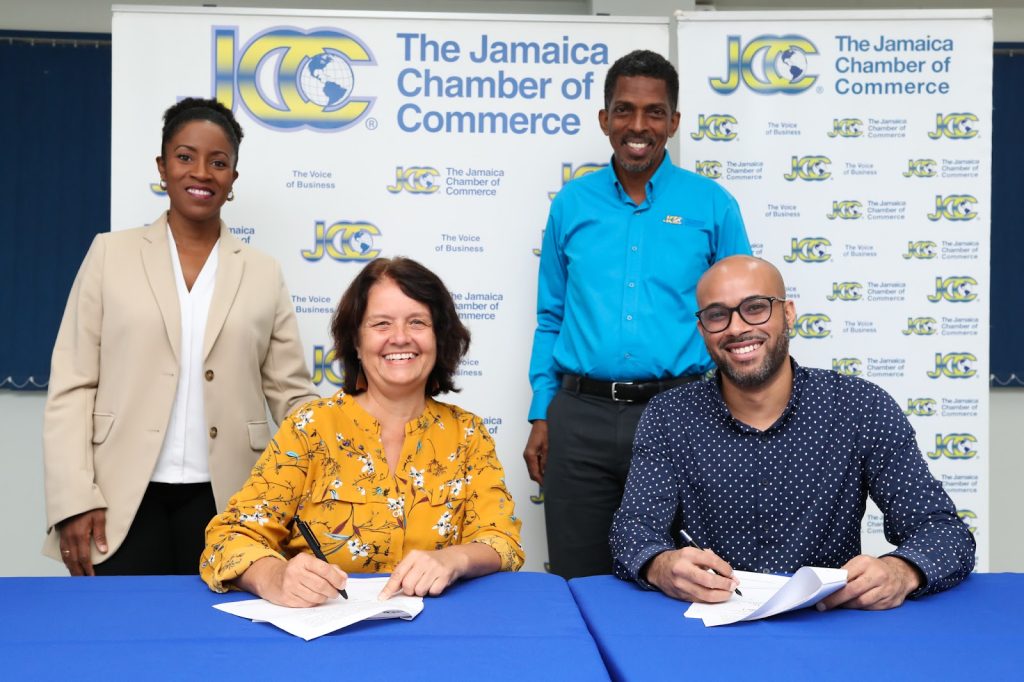
[L-R] Andrea Dempster Chung, Cofounder and Executive Director, Kingston Creative,Doris Gross, Director and Art District Lead, Kingston Creative, Ian Neita, President,Jamaica Chamber of Commerce, Jonathan Swire, Director,Jamaica Chamber of Commerce

Andrea Dempster Chung (Co-Founder & Executive Director, Kingston Creative) and Ian Neita (President, Jamaica Chamber of Commerce) holding signed MoU
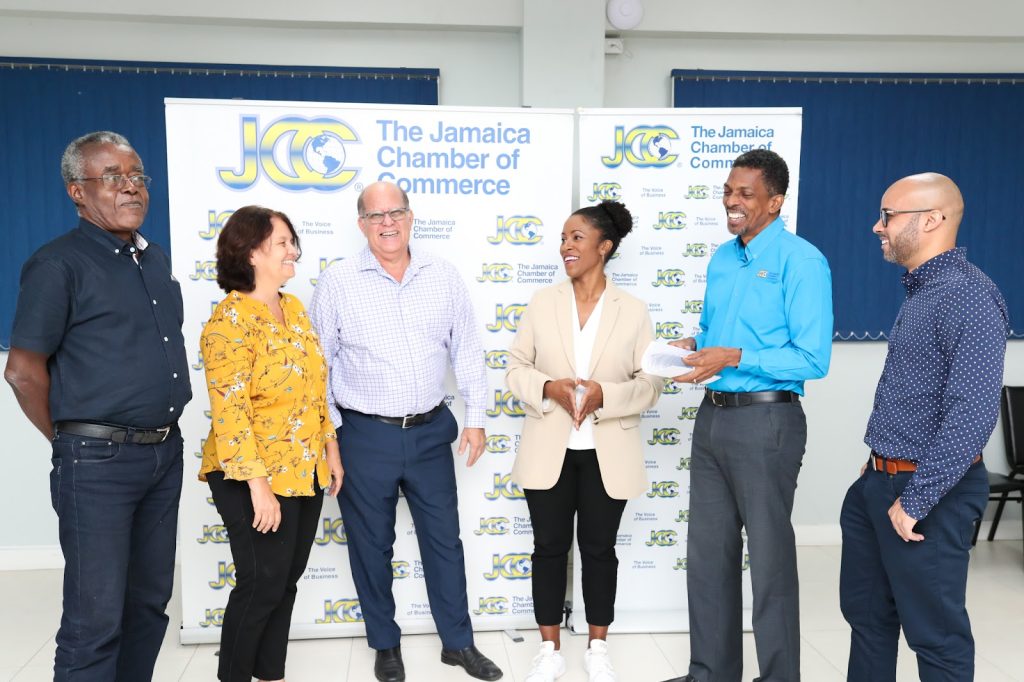
[L-R]: Trevor Fearon, Jamaica Chamber of Commerce, Doris Gross, Director and Art District Lead, Kingston Creative, Larry Watson, Jamaica Chamber of Commerce, Andrea Dempster Chung Kingston Creative, Ian Neita, President, Jamaica Chamber of Commerce, Jonathan Swire, Director, Jamaica Chamber of Commerce
Kingston Creative Celebrates First 50 Founders
On its 6th Anniversary, Kingston Creative announces the First 50 Founders and launches ‘100 Creative Innovators’ campaign to support the Cultural & Creative Industries in Jamaica
There was a celebratory mood at the Kingston Creative Hub in Downtown Kingston today as the First 50 Founders of the Creative City gathered to mark the 6th Anniversary of the arts NGO.
Among the First 50 partners gathered at F&B Downtown were the Ministry of Culture, Gender Entertainment and Sport, the Kingston and St. Andrew Municipal Corporation, the Jamaica Observer, the Gleaner Company Limited, CB Facey Foundation, IDB Lab, JAMPRO, Main Event Entertainment Group, Sherwin Williams, iPrint Group, Edufocal, iCreate, Red Stripe, Jamaica Chamber of Commerce, Grace & Staff Community Development Foundation, ROK Hotel and more.
The Honourable Alando Terrelonge, State Minister in the Ministry of Culture, Gender, Entertainment and Sport remarked, “It is truly with a sense of pride and joy that I am here today. In 2018 when we received the call from Andrea and the vision was outlined of murals and a Creative Hub and they were looking for the First 50, we said that the Government must be the very first Founder, as it is in our interest to add our greater value to the cultural landscape.” He also brought greetings from The Honourable Olivia Grange CD, Minister of Culture, Gender, Entertainment and Sport who he stated could not be present that morning, but who sent her support. He reiterated that the vision of Kingston Creative is a shared vision and that unified Government support sends a strong positive message to global partners.
Sarah Hsia, from Rockstone Legal commented, “Rockstone Legal is proud to support Kingston Creative as a First 50 Founder of the Creative City. We have long recognized that Jamaica is a global cultural heavyweight, and believe that a focus on the development of our creative economy is an important driver of overall economic development and wellbeing. Our role is to empower creativity by teaching people about the business of creativity. We look forward to supporting Kingston Creative through workshops and education, and providing pro bono legal assistance to Kingston Creative and the KC community.”
Sean Wallace, Head of Commerce, Red Stripe, commented, “As one of the first corporate sponsors of Kingston Creative and a strong supporter of the drive to expand the creative economy in Jamaica, we could not be more pleased to see the continued growth of your movement. The Red Stripe team salutes the work you have been doing and looks forward to celebrating your wins as you strive to elevate the profile and substance of the creative industries, and the many talented Jamaicans who keep it thriving. For an iconic brand like ours, we relish the energy and the vibe of the creative community; and through our support of music, food and other cultural expressions over the last several decades, we have sought to ensure that great art from this big little island always has a platform for exposure. Red Stripe congratulates you on your innovation and determination as together we promote and support local creatives to the world!” – Sean Wallace, Head of Commerce, Red Stripe.
Finally, the Mayor of Kingston, His Worship Councillor Delroy Williams and the CEO of the Kingston & St. Andrew Municipal Corporation, Robert Hill were also in attendance and voiced their support. The Mayor commended the Kingston Creative team on their achievements over the six year period and thanked everyone who has been supporting what is happening in Downtown and right across the Municipality. He expressed the appreciation of the municipality saying, “Government on its own cannot do all that needs to happen. The private sector, private individuals and groupings must get involved in the entire process. In the case of Kingston Creative it’s not just an idea they are running with, they are actually implementing and doing projects and helping in the transformation and the use of the space. The events that they host are very important to the process of developing Downtown, and are critical to the promotion of the space. In 3-4 years, we want to see that the space is consistently being used. We give our full support and we know that you have the full support of the MInistry and the entire government.”
“Six years ago we declared a vision of a Creative Hub and a vibrant Art District in Downtown Kingston, but we knew that we could not achieve this on our own which is why we launched the First 50 campaign,“ stated Andrea Dempster Chung. Even though we have met that target, there are still lots of ways to get involved. Kingston Creative is launching 100 Creative Innovators – a network of individuals and companies that fund programmes that support the cultural and creative industries in Jamaica. We believe that if organisations are going to base their operations in a highly creative country, it is imperative that they support the arts. This is a call for everyone to come forward and get involved in supporting creatives, developing Downtown Kingston and growing the creative economy.”
First 50 Founders of the Creative City
Listed in alphabetical order
1 American Friends of Jamaica (AFJ)
2 Blue Mahoe Capital
3 CB Facey Foundation
4 Coldwell Bankers
5 Crime Stop
6 Dennis Shipping
7 Development Bank of Jamaica (DBJ)
8 Digicel Foundation
9 Duke Street Refurbishment Programme
10 Edufocal Group
11 European Union
12 F&B Downtown
13 Flow
14 Gleaner
15 Global Cultural Districts Network
16 Grace and Staff Community Development Foundation
17 Heart Trust NTA
18 Hub Coworking
19 ICD Group
20 iCreate
21 Inter-American Development Bank (IDB Lab)
22 iPrint Group
23 Itopia Life
24 Jamaica Business Development Corporation (JBDC)
25 Jamaica Chamber Commerce
26 Jamaica Observer
27 Jamaica Social Investment Fund
28 Jamaica Tourist Board
29 JAMPRO
30 Kingston and St. Andrew Municipal Corporation
31 Main Event Entertainment Group
32 Ministry of Culture, Gender, Entertainment & Sport
33 Naylor Mullings
34 Paperboy JA
35 Phase 3 Productions
36 Planning Institute of Jamaica
37 PR Etc.
38 Red Stripe
39 Reel Vibez
40 Rok Hilton Hotel
41 Rokstone Legal
42 Running Events JA
43 Sagicor
44 Sherwin Williams
45 Spanish Court Hotel
46 Tourism Enhancement Fund (TEF)
47 TPDCO
48 tTech Limited
49 Urban Development Corporation
50 World Bank
Kingston Creative hosts ‘OGs vs Gen Z’ meetup
Creatives of all ages gathered at the Kingston Creative Coworking Space on March 7 for the ‘OGs vs Gen Z’ meetup, an event designed to connect industry veterans with emerging talent. The discussion focused on the evolving creative landscape, access to opportunities, and the role of mentorship in career growth.
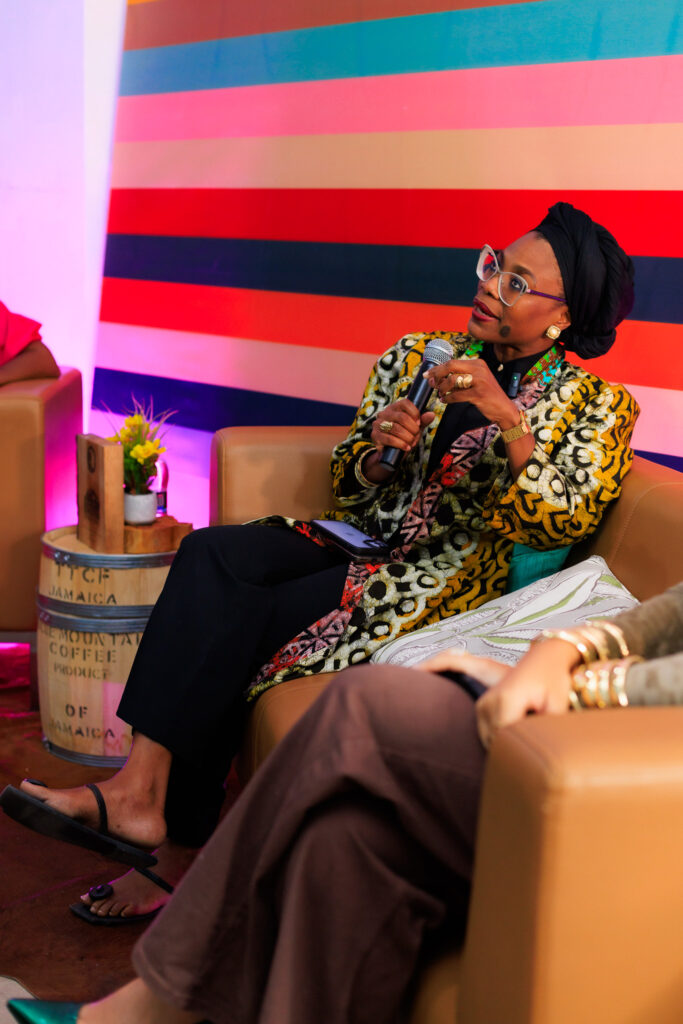
The event featured insightful conversations led by industry veteran Vonni Koromanti, a cultural and creative industries consultant, who spoke about the importance of protecting creative work and industry changes over time, while Anna-Lisa Guthrie (Annaixe), a multidisciplinary visual artist, shared her experience working as a multihyphenate and the difficulties faced by up and coming creatives.

Koromanti emphasised the importance of knowledge-sharing between generations, stating, “Let us take from both generations—what is good, what is upfull, what is meaningful. Add to it, because I think that is important, own it and improve it while safeguarding our culture.”
Guthrie encouraged creatives to take proactive steps in shaping their careers, saying, “Let this (Creative Meetup) be the catalyst for whatever it is we say we are lacking. Let’s put some real action… to passion.”
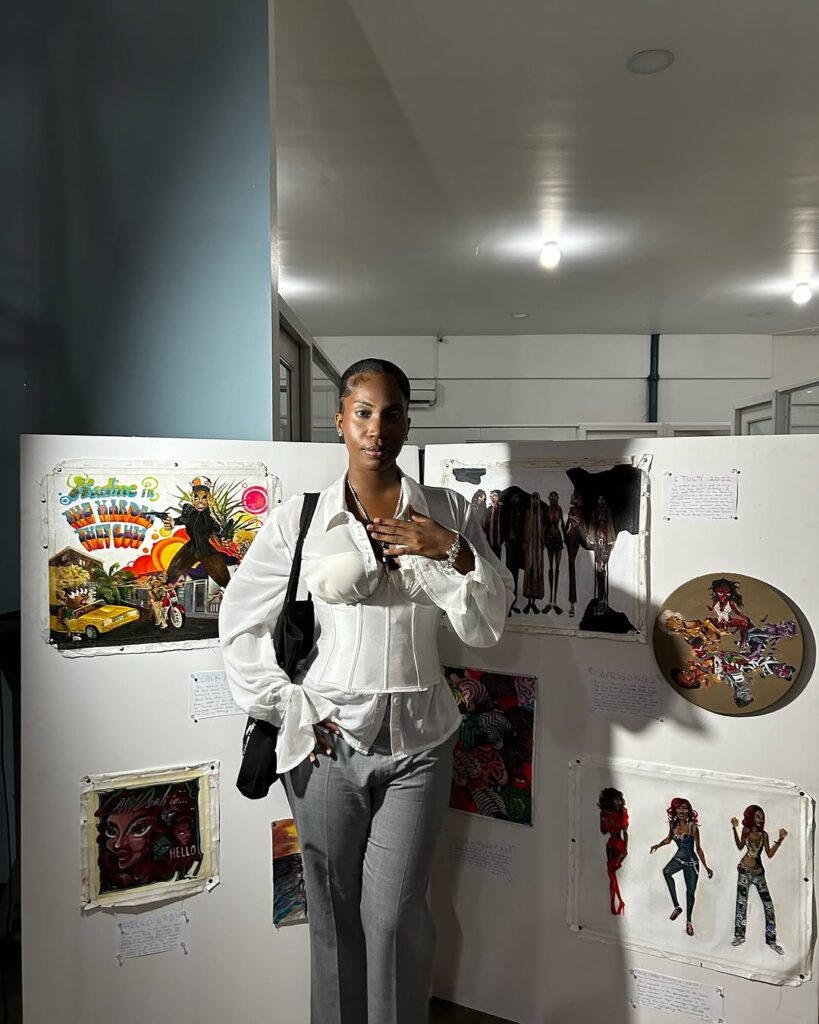
Attendees also explored a pop-up art exhibition by up-and-coming visual artist Kadine Lindsay, known for her work that examines themes of identity and personal storytelling.
Kingston Creative’s executive director, Andrea Dempster-Chung, highlighted the significance of these intergenerational conversations.
“The creative industry thrives on collaboration. When seasoned professionals and emerging talents come together, it fosters innovation, preserves cultural legacies, and builds a stronger creative economy. That is the community that Kingston Creative seeks to create,” she said.
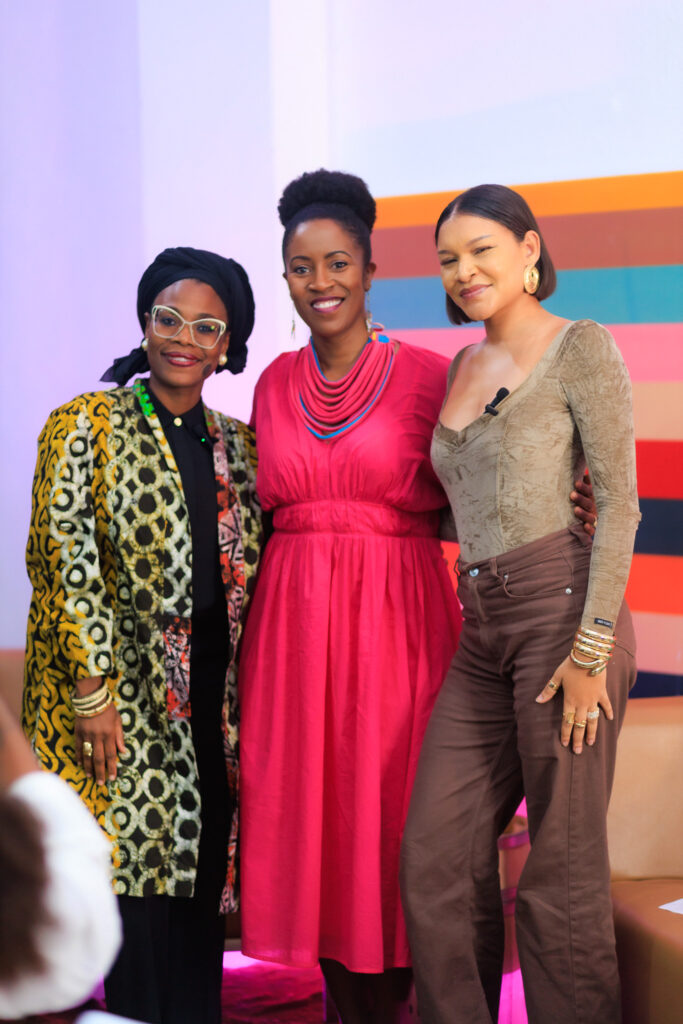
The discussion raised key questions about career advancement in Jamaica’s creative industry—whether veteran artists had greater access to opportunities or if Gen Z is leveraging technology to redefine success.
The event emphasised the need for more structured mentorship in the community.
